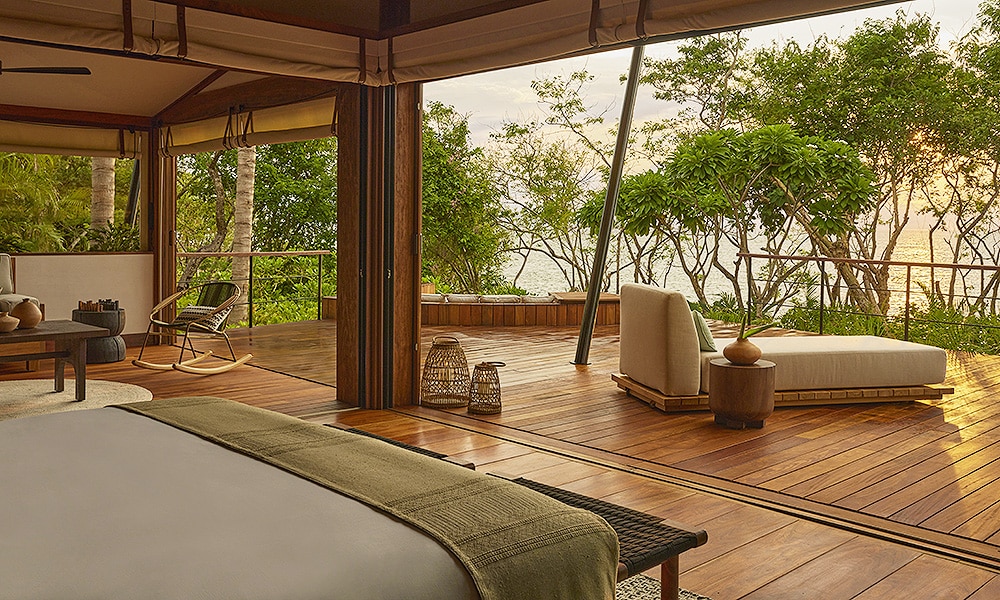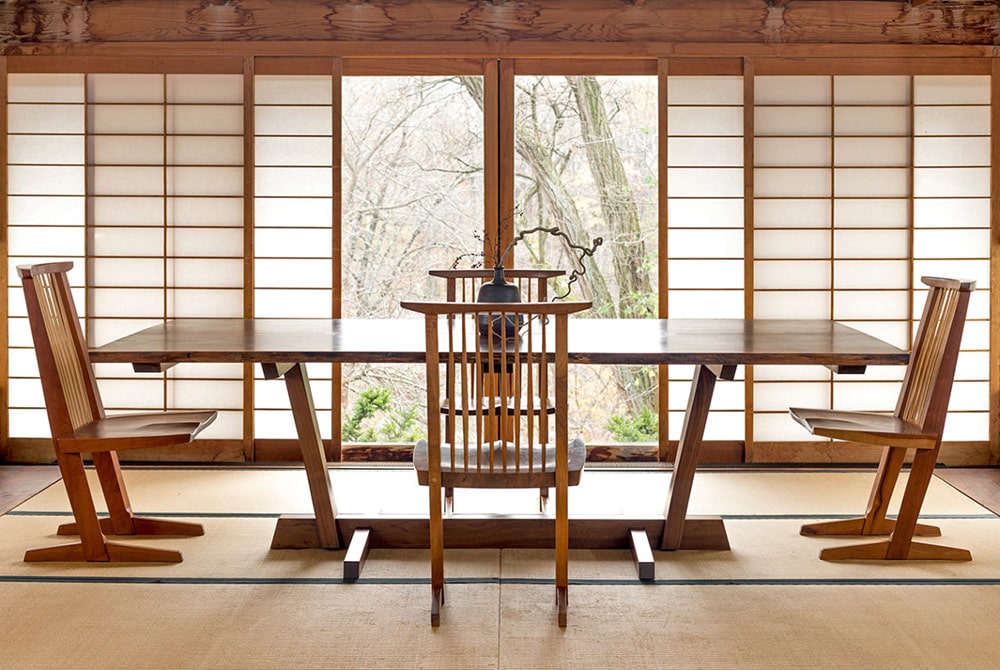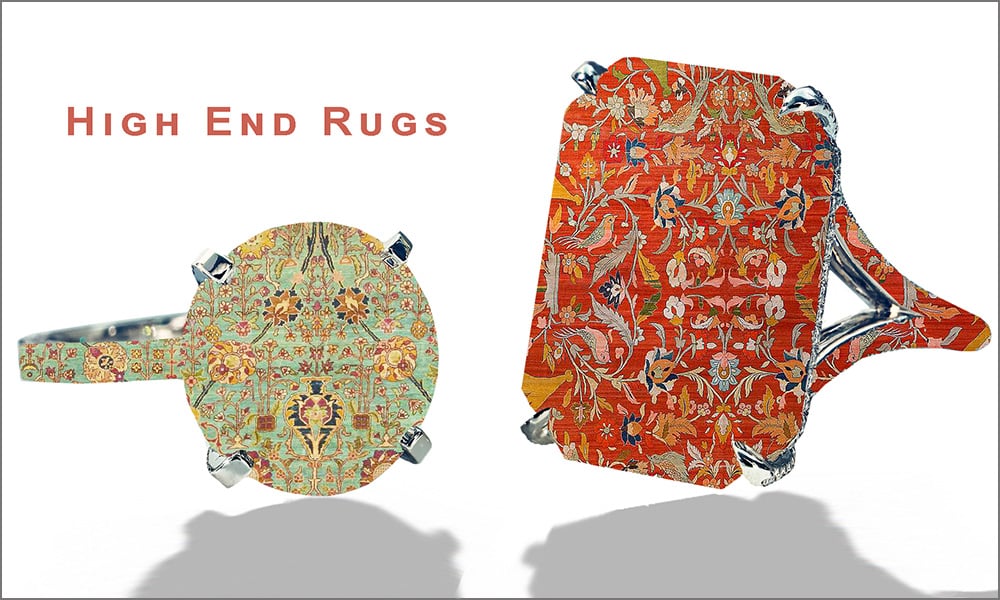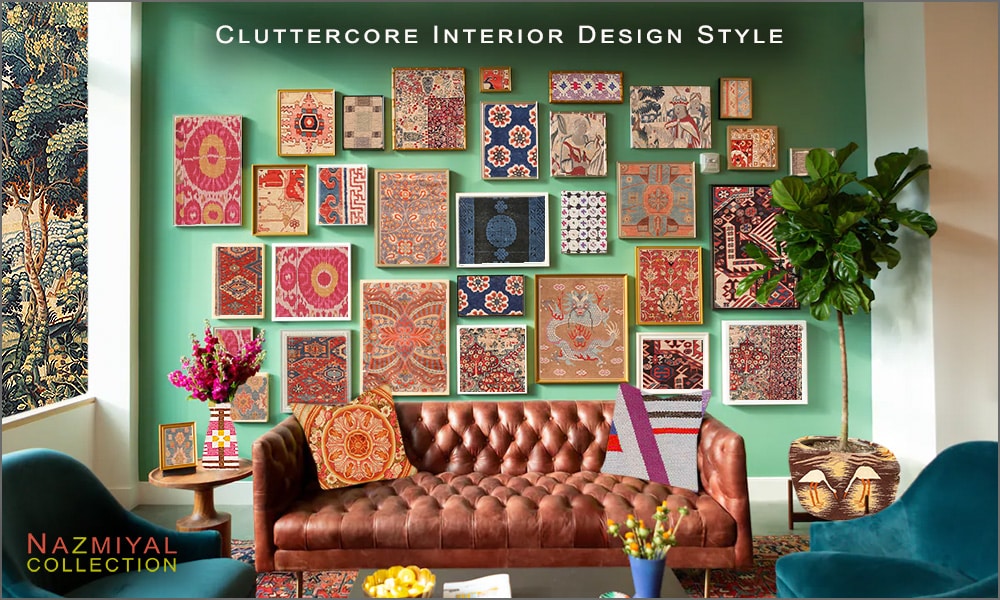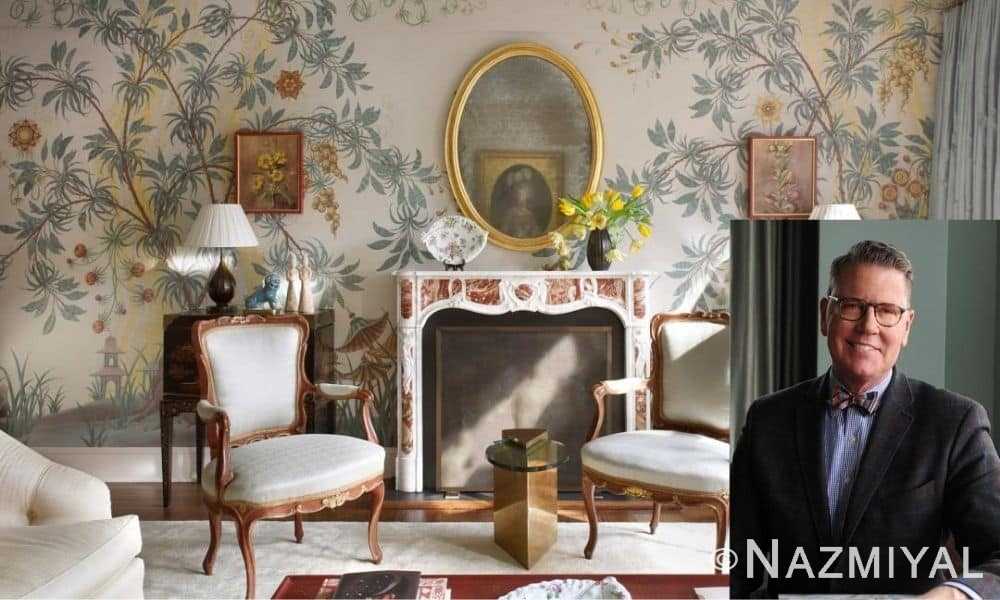Exploring high-end interior design and home decor
Shop High-End Luxury Rugs | Shop All Antique Rugs | Shop All Vintage Rugs | Create Your Own Luxurious Custom Area Rugs
What does high-end interior design actually means?
High-end interior design refers to the creation and execution of sophisticated, luxurious, and exclusive interior spaces that prioritize aesthetics, comfort, functionality, and quality. It involves designing interiors for spaces such as luxury homes, high-end hotels, upscale restaurants, boutiques, and other premium environments. High-end interior design goes beyond basic functional considerations and focuses on creating environments that evoke a sense of opulence, refinement, and elegance.
Key characteristics of high-end interior design include:
- Quality Materials and Craftsmanship: High-end interior design emphasizes the use of premium materials such as exotic woods, marble, granite, high-quality fabrics, fine leather, and other luxury materials. Attention to detail and expert craftsmanship are essential to achieve a flawless finish.
- Customization: Custom-designed furniture, fixtures, and accessories are often employed to create unique and personalized spaces. Tailored designs ensure that every element fits seamlessly within the overall aesthetic.
- Attention to Detail: Every aspect of the design, from the layout to the smallest decorative elements, is meticulously planned and executed. Attention to detail extends to lighting, textures, color palettes, and spatial arrangements.
- Luxurious Furnishings: High-end interior spaces feature furniture that is both aesthetically pleasing and comfortable. Furniture pieces might be designer or artisan-made, often with intricate detailing and exclusive fabrics.
- Art and Accessories: Fine art pieces, sculptures, and high-end accessories contribute to the overall ambiance of luxury and sophistication. These elements are carefully chosen to complement the design theme.
- Spatial Planning: Space utilization is optimized to create a sense of openness and grandeur. High-end interiors often have open layouts that flow seamlessly from one area to another, creating a feeling of expansiveness.
- Lighting: Lighting plays a crucial role in high-end interior design. Different types of lighting, such as ambient, task, and accent lighting, are carefully chosen to enhance the atmosphere and highlight key design elements.
- Color Palette: A refined and harmonious color palette is chosen to create a cohesive and elegant ambiance. Neutral tones, rich hues, and metallic accents are commonly used.
- Architectural Details: Architectural elements like intricate moldings, coffered ceilings, and ornate trim-work can add a sense of grandeur and historical charm to the space.
- Technology Integration: High-end interior design often incorporates the latest technology discreetly into the design. This could include integrated audio-visual systems, smart home features, and automated controls for lighting, temperature, and more.
- Privacy and Exclusivity: High-end interiors often prioritize privacy and exclusivity. Design solutions might include hidden passages, private lounges, and secluded outdoor spaces.
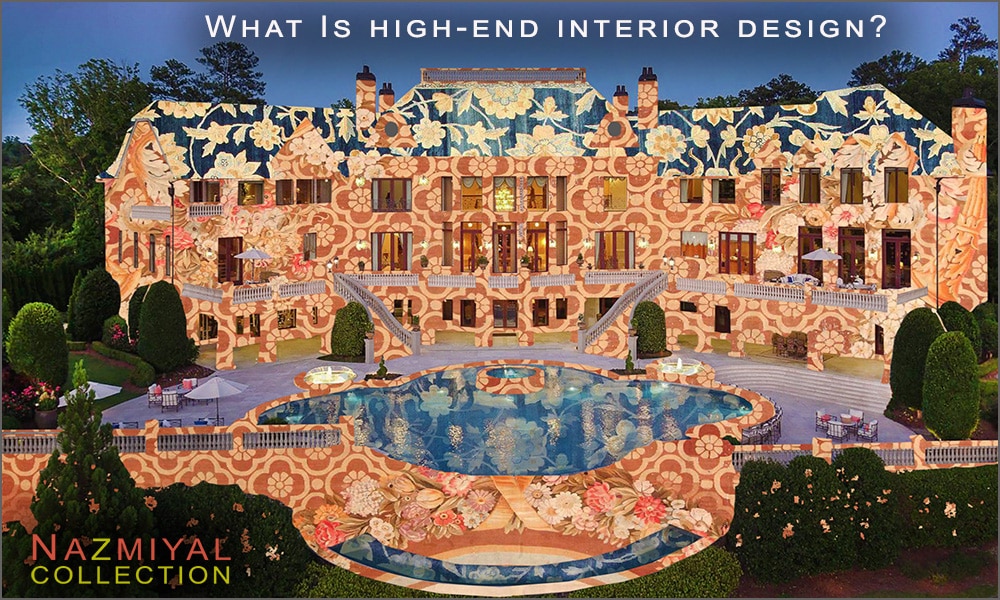
What is high-end interior design?
High-end interior designers work closely with their clients to understand their tastes, preferences, and lifestyle in order to create bespoke spaces that reflect their personality and values. The goal is to create environments that not only look stunning but also provide a high level of comfort and functionality, catering to the unique needs of the occupants.
What is considered high-end interior design?
High-end interior design refers to the creation and implementation of luxurious, upscale, and top-quality living spaces. It involves designing interiors that exude elegance, sophistication, and exclusivity while incorporating the finest materials, craftsmanship, and attention to detail.
Several key elements define high-end interior design:
- Quality Materials: High-end interior design employs premium materials such as marble, granite, hardwoods, natural stone, custom fabrics, and rare finishes. These materials not only look exquisite but also contribute to the longevity and durability of the design.
- Customization: Customized and bespoke elements are a hallmark of high-end design. Tailoring furniture, fixtures, and other elements to suit the client’s preferences and the unique characteristics of the space adds a personalized touch.
- Attention to Detail: Every detail is carefully considered in high-end interior design. From the intricate molding and trim to the selection of hardware, lighting, and accessories, nothing is overlooked.
- Furniture and Furnishings: High-end interiors feature designer furniture and high-quality furnishings. Pieces are often selected for their artistic value, ergonomic design, and exceptional craftsmanship.
- Color and Texture: A sophisticated use of color palettes and textures helps create a sense of luxury. Subtle color combinations and rich textures add depth and visual interest to the space.
- Lighting: Lighting plays a crucial role in setting the mood and highlighting the design’s features. High-end interiors incorporate a mix of ambient, task, and accent lighting with luxurious fixtures and innovative lighting designs.
- Art and Decor: Original artwork, sculptures, and curated decor items are integrated into the design to enhance the aesthetic appeal and uniqueness of the space.
- Spatial Planning: Efficient and thoughtful space planning ensures that the design not only looks good but also functions seamlessly. Every element is strategically placed to optimize flow and usability.
- Technology Integration: High-end designs often incorporate the latest technology seamlessly into the space. This can include home automation systems, integrated entertainment setups, and smart appliances.
- Architectural Details: Architectural elements such as arches, columns, intricate ceilings, and unique floor patterns contribute to the overall grandeur of high-end interiors.
- Luxurious Textiles: Fine textiles such as silk, velvet, and cashmere are used for upholstery, drapery, and soft furnishings, adding to the tactile richness of the design.
- Spatial Proportions: Attention to spatial proportions and balance creates a harmonious and visually pleasing environment. High-end designers often follow principles of classical architecture to achieve this effect.
- Exclusivity and Rarity: High-end interior design often incorporates one-of-a-kind or limited-edition pieces, showcasing exclusivity and rarity.
- Collaboration with Artisans: Collaboration with skilled artisans, craftsmen, and artists can result in bespoke and handcrafted elements that elevate the design.
Overall, high-end interior design is about creating a sumptuous and visually captivating environment that reflects the client’s preferences and lifestyle, while incorporating the finest design principles, materials, and craftsmanship available.
Are high-end and luxury interior design considered the same?
High-end and luxury interior design are closely related concepts, but they are not exactly the same. While they share many similarities and often overlap, there are nuanced differences between the two terms.
High-End Interior Design:
High-end interior design focuses on creating sophisticated, well-crafted, and exclusive interior spaces that prioritize quality, aesthetics, and functionality. It involves using premium materials, custom-designed furniture, attention to detail, and expert craftsmanship to achieve a refined and elegant atmosphere. High-end design is about creating a sense of luxury through carefully chosen elements that enhance the overall ambiance. While luxury is a key aspect of high-end design, it’s not the sole defining factor.
Luxury Interior Design:
Luxury interior design places a stronger emphasis on opulence, extravagance, and indulgence. It goes beyond high-quality materials and craftsmanship to create spaces that exude a sense of grandeur and excess. Luxury design often incorporates rare and lavish materials, intricate detailing, and extravagant features that are not commonly found in standard interior design. The goal of luxury design is to create spaces that feel sumptuous, exclusive, and lavish, often appealing to a specific lifestyle associated with wealth and abundance.
In summary, high-end interior design emphasizes quality, aesthetics, and customization while still maintaining a level of sophistication and elegance. Luxury interior design takes these principles to the next level by indulging in opulence, grandeur, and extravagance to create spaces that are truly extraordinary and exclusive. While there is overlap between the two concepts, luxury design tends to push the boundaries of design and materials to create an unmistakably lavish atmosphere.
What are the different elements of high-end interior design?
High-end interior design incorporates a wide range of elements to create sophisticated, luxurious, and exclusive spaces.
Here are some of the key elements that contribute to high-end interior design:
- Quality Materials: The use of premium materials is a hallmark of high-end interior design. This includes exotic woods, marble, granite, natural stone, fine metals, luxurious fabrics, and high-quality leather.
- Custom Furniture: Custom-designed furniture pieces are often created to fit the unique dimensions and style of the space. These pieces are made with attention to detail and often feature intricate detailing and high-quality craftsmanship.
- Color Palette: High-end interiors typically feature a refined and harmonious color palette. Neutral tones, rich hues, and metallic accents are commonly used to create an elegant ambiance.
- Textures: Layering textures through fabrics, textiles, wall coverings, area rugs, and other materials adds depth and richness to the design. Velvet, silk, satin, and other tactile materials are frequently used.
- Lighting: Thoughtful lighting design enhances the overall atmosphere of the space. Different types of lighting, such as ambient, task, and accent lighting, are strategically used to highlight key design elements.
- Architectural Details: Ornate moldings, coffered ceilings, wainscoting and other architectural details add a sense of elegance and sophistication to the interior.
- Art and Accessories: Fine art pieces, sculptures, and high-end accessories are carefully curated to complement the design theme and enhance the overall aesthetic.
- Luxurious Textiles: High-quality draperies, curtains, upholstery, and bedding contribute to the overall comfort and luxury of the space. Rich fabrics such as silk, velvet, and damask are often used.
- Spatial Arrangement: The layout of high-end interiors is carefully planned to optimize the flow of space and create a sense of openness and grandeur. Furniture placement and spatial arrangements are critical considerations.
- Balance and Proportion: Achieving balance and proportion in design elements, from furniture to accessories, creates a harmonious and visually pleasing environment.
- Custom Carpentry and Millwork: Intricate woodwork, cabinetry, and custom-built shelving are often used to add unique character and functionality to the space.
- Technology Integration: The integration of discreet technology enhances convenience and comfort. This can include hidden audio-visual systems, smart home features, and automated controls.
- Exclusive Materials: High-end design often incorporates rare and exclusive materials, such as semiprecious stones, unique woods, and limited-edition materials.
- Attention to Detail: Meticulous attention to even the smallest details is a hallmark of high-end design. Every element, from hardware to stitching, is carefully considered.
- Privacy and Seclusion: Creating private and secluded spaces within the overall design adds an element of exclusivity and comfort.
- Environmental Considerations: Sustainable and eco-friendly materials and practices are increasingly being integrated into high-end interior design to align with modern values.
These elements, when combined and executed with care, contribute to the creation of high-end interior spaces that reflect luxury, sophistication, and a unique sense of style.
Learn more: Matching and Pairing Rugs With Art | What Are The Best Rug Making Materials | Sustainable Environmentally Friendly / Green Eco Friendly Rugs
What types of area rugs would you expect to see in high-end interior design?
In high-end interior design, area rugs are not just functional floor coverings; they are also considered essential design elements that contribute to the overall aesthetic and ambiance of the space. The choice of area rug styles can greatly influence the sense of luxury and sophistication in a room.
Here are some types of area rugs commonly found in high-end interior design:
- Hand-Knotted Oriental Rugs: Handcrafted Oriental rugs are made using intricate hand-knotting rug weaving techniques and often feature elaborate patterns and designs. Oriental rugs, such as Persian rugs, Turkish rugs, and Indian rugs, are highly sought after for their craftsmanship and timeless elegance.
- Silk Rugs: Fine Silk rugs are prized for their luxurious sheen and soft texture. They often feature intricate patterns and can add a touch of opulence to any space.
- Antique Rugs: Antique rugs, with their long and varied rug history and unique character, are a favorite in high-end design. They can be one-of-a-kind pieces that lend a sense of heritage and richness to the room.
- Natural Fiber Rugs: High-end interiors often incorporate natural fiber rugs such as sisal, jute, or seagrass. These types of area rugs add texture and a sense of earthy elegance to the space.
- Custom-Designed Rugs: In high-end interior design, custom-designed rugs are a popular choice. Custom bespoke area rugs can be tailored to fit the exact dimensions and design requirements of the space, ensuring a perfect match with the overall aesthetic.
- Modern Contemporary Rugs: High-end interiors may also feature new modern contemporary area rugs created by renowned designers and artists. The modern and more contemporary area rugs often push creative boundaries and can be bold statement pieces.
- Artisanal and Limited-Edition Rugs: Rugs created by skilled artisans using traditional techniques can add an element of exclusivity to the design. Limited-edition art rugs crafted with care and precision are highly valued.
- Layered Rugs: In some high-end interiors, designers may opt to layer area rugs on top of other area rugs or carpets to create depth and visual interest. Layering different textures and patterns can add a sense of luxury and uniqueness.
- Monogrammed or Branded Rugs: For some luxury spaces, custom monogrammed or branded designs in area rugs may be used to personalize the design and reflect the occupant’s identity.
- Bold Patterns and Colors: High-end interiors often feature rugs with bold patterns, intricate motifs, and rich color palettes that make a strong visual impact.
- Faux Fur and Exotic Materials: In certain design styles, such as modern glam or Hollywood regency, faux fur or handmade rugs made from exotic materials like animal hides may be used to create a sense of luxury and drama.
When selecting an area rug for a high-end interior, it’s important to consider the design style, color scheme, and overall aesthetic of the space. The rug should complement the other design elements and contribute to the cohesive and luxurious ambiance of the room.
Learn More: How To Choose The Perfect Rug? | How To Find The Best Rug Dealers And Reputable Rug Stores To Buy Rugs From | What are the most popular Persian rugs? | The Handcrafted Persian Area Rug | Shopping For Area Rugs Online vs Buying Rugs In Person | What’s So Special About Persian Rugs? | Home Decorating With Turkish Area Rugs | Interior Decorating With Oushak Rugs | Home Decorating With Geometric Area Rugs | Tips For Home Decorating With Scandinavian Area Rugs | Home Interior Decorating With Persian and Oriental Antique Rugs | How to Decorate Your Home With Antique Caucasian Rugs | Choosing Retro Rugs For Your Home Decor | 5 Tips For Using New Modern Area Rugs In Contemporary Deco
What makes “high-end” interiors “high-end”?
“High-end” interiors are characterized by a combination of factors that set them apart from standard or mainstream interior designs. These factors collectively contribute to the elevated quality, luxury, and exclusivity that define high-end interiors.
Here are some key aspects that make interiors “high-end”:
- Quality of Materials: High-end interiors prioritize the use of premium materials, such as rare woods, natural stones, fine metals, and luxurious fabrics. These materials are selected for their exceptional quality, durability, and aesthetic appeal.
- Expert Craftsmanship: The level of craftsmanship in high-end interiors is exceptional. Skilled artisans and craftspeople meticulously create custom furniture, intricate moldings, ornate finishes, and other design elements with impeccable attention to detail.
- Customization: High-end interiors often involve custom-designed and bespoke elements. From furniture to fixtures, these elements are tailored to fit the unique dimensions and style of the space, resulting in a one-of-a-kind design.
- Attention to Detail: Every aspect of a high-end interior is carefully considered. From architectural features to decorative accents, each detail contributes to the overall aesthetic and ambiance of the space.
- Exclusive Design: High-end interiors feature exclusive design concepts that reflect the personality and preferences of the client. Designers work closely with clients to create spaces that are personalized and unique.
- Art and Accessories: Fine art pieces, sculptures, and high-end accessories are curated to complement the design theme and enhance the luxurious atmosphere.
- Spatial Planning: High-end interiors optimize the layout and spatial flow to create an open, grand, and inviting environment. The arrangement of furniture and design elements is carefully planned for maximum impact.
- Luxury Furnishings: Furniture in high-end interiors is often designer-made or artisan-crafted. These pieces combine aesthetics with comfort and functionality.
- Technology Integration: High-end interiors seamlessly integrate technology to enhance comfort and convenience while maintaining a discreet and elegant appearance.
- Lighting Design: Thoughtful lighting design is a hallmark of high-end interiors. Different types of lighting, from chandeliers to hidden accent lights, are strategically placed to create ambiance and highlight design features.
- Elegant Color Palette: The color palette in high-end interiors is harmonious and refined. Neutral tones, rich hues, and metallic accents contribute to an elegant and timeless feel.
- Architectural Elements: Ornate moldings, coffered ceilings, archways, and other architectural features add a sense of grandeur and sophistication to the space.
- Exclusivity and Privacy: High-end interiors often include private and secluded spaces that provide an element of exclusivity and comfort.
- Integration of Nature: The use of natural elements, such as indoor plants or large windows that offer outdoor views, can enhance the sense of luxury and connection to the environment.
- Emphasis on Comfort: While aesthetics are paramount, high-end interiors also prioritize comfort and functionality to create spaces that are both visually appealing and livable.
- History and Legacy: High-end interiors may incorporate elements with historical significance or a sense of heritage, adding depth and character to the design.
Collectively, these elements work together to create high-end interiors that evoke a sense of luxury, sophistication, and exclusivity, catering to the unique preferences and lifestyles of their occupants.
What expensive items should a “high-end” interior have?
High-end interiors often feature a selection of expensive and luxurious items that contribute to the overall opulence, refinement, and exclusivity of the space.
While the specific items vary here are some examples of expensive items commonly found in high-end interiors:
- Custom Furniture: Custom-designed furniture tailored to the space and created by skilled artisans can be a centerpiece of high-end interiors. This might include sofas, chairs, dining tables, and unique statement pieces.
- Designer Lighting Fixtures: High-end interiors often showcase exquisite chandeliers, pendant lights, and sconces designed by renowned lighting designers. These fixtures can be works of art that enhance the ambiance of the space.
- Luxurious Fabrics: High-quality fabrics, such as silk, velvet, cashmere, and premium leather, are used for upholstery, curtains, and bedding. These fabrics add a touch of luxury and comfort.
- Hand-Knotted Rugs: Intricate hand-knotted rugs made from premium materials like silk or wool can anchor a space and add a sense of sophistication.
- Artwork: Fine art pieces, paintings, sculptures, and other art installations contribute to the aesthetic and can be valuable investments in a high-end interior.
- Antique or Vintage Pieces: Antique furniture, decorative objects, and collectibles can add character and a sense of history to the space.
- Statement Mirrors: Oversized or ornately designed mirrors can serve as focal points and add a touch of glamour to the interior.
- Exquisite Tableware: High-end interiors might feature fine China, crystal glassware, and silverware for dining and entertaining.
- Grand Piano: A grand piano, often a Steinway or another prestigious brand, can be a luxurious addition to a living room or entertainment space.
- Home Automation Systems: High-end interiors often incorporate sophisticated home automation systems for controlling lighting, audio-visual equipment, climate, and security.
- Designer Kitchen Appliances: High-end kitchens may feature top-of-the-line appliances from renowned brands like Sub-Zero, Wolf, and Miele.
- Custom Built-Ins: Custom-built cabinetry, shelving, and storage solutions designed to match the overall aesthetic of the space are common in high-end interiors.
- Home Theater Systems: A dedicated home theater room with high-end audio-visual equipment, seating, and acoustic treatments can be a luxurious entertainment feature.
- Wine Cellar: For those who appreciate fine wines, a well-designed and climate-controlled wine cellar can be a luxurious addition.
- Spa-Like Bathroom: High-end bathrooms often include features like luxurious freestanding tubs, steam showers, and high-end fixtures and finishes.
- Outdoor Entertaining Area: Expansive outdoor spaces with well-designed landscaping, outdoor kitchens, and luxurious furnishings can enhance the overall living experience.
- Exclusive Decorative Accessories: Limited-edition decorative items, such as vases, sculptures, and unique decorative pieces, can add an element of exclusivity to the design.
It’s important to note that high-end interiors are not solely defined by the cost of individual items, but by how these elements are harmoniously integrated to create a cohesive and luxurious environment that reflects the client’s style and values. The selection of expensive items should be guided by the overall design vision and the desire to create a space that exudes elegance, sophistication, and comfort.
What are some of the more notable high-end interiors?
There are many notable examples of high-end interiors around the world, each with its own unique design style, features, and characteristics.
Here are a few iconic iconic high-end examples:
- Palace of Versailles, France: The Palace of Versailles is a symbol of opulence and grandeur. The interiors feature elaborate gilded decorations, intricate frescoes, and luxurious furnishings. The Hall of Mirrors is particularly famous for its stunning design.
- The Ritz Paris, France: This legendary hotel is known for its luxurious and elegant interiors. The design incorporates fine materials, antique furniture, and classic French country style. The Ritz’s iconic Coco Chanel Suite is a prime example of high-end design.
- Burj Al Arab, Dubai: Often referred to as the only seven-star hotel in the world, the Burj Al Arab features extravagant interiors with gold leaf accents, marble floors, and stunning panoramic views. The Royal Suite is one of the most luxurious accommodations globally.
- The Plaza Hotel, New York City: Located on Fifth Avenue, The Plaza Hotel is known for its timeless elegance and luxurious interiors. The Grand Ballroom and various suites showcase a blend of classic and contemporary design elements.
- Villa d’Este, Italy: This historic villa on Lake Como boasts beautifully manicured gardens and interiors filled with antique furnishings, intricate tapestries, and stunning frescoes.
- Chateau de Chantilly, France: Known for its impressive art collection and stunning interiors, Chateau de Chantilly showcases opulent design with period furniture, rare books and precious artwork.
- Buckingham Palace, United Kingdom: The official residence of the British royal monarch, Buckingham Palace features lavish state rooms with intricate moldings, chandeliers, and priceless artwork.
- Hotel Bel-Air, Los Angeles: This iconic luxury hotel features a unique blend of Spanish Colonial design and Hollywood Regency styles. The interiors are characterized by high-end furnishings, lush gardens, and serene spaces.
- Villa Ephrussi de Rothschild, France: Situated on the French Riviera, this villa features opulent interiors with fine art, decorative objects, and stunning gardens overlooking the Mediterranean Sea.
- Palazzo Versace, Dubai: This luxury hotel in United Arab Emirate City State Of Dubai embraces the signature style of the Versace brand with bold patterns, rich textures, and exquisite detailing throughout its interiors.
These examples represent just a small selection of high-end interiors that have become iconic for their design, luxury, and historical significance. Each of these spaces showcases different design styles and elements, but they all share a commitment to creating environments that exude opulence, refinement, and exclusivity.
What stylistic approach would one expect to see in a high-end interior?
High-end interiors can encompass a variety of stylistic approaches, each reflecting different design preferences and historical influences. The choice of stylistic approach often depends on the client’s taste and the architectural context of the space.
Here are some stylistic approaches commonly found in high-end interiors:
- Classic Elegance: Classic high-end interiors draw inspiration from historical design periods such as Neoclassical, Baroque, or Rococo. They feature ornate detailing, intricate moldings, chandeliers, and luxurious fabrics. Classic furniture silhouettes and rich color palettes contribute to a timeless and refined ambiance.
- Contemporary Luxury: Contemporary high-end interiors focus on clean lines, sleek surfaces, and a minimalist interior deign aesthetic. High-quality materials, such as marble, glass, and metal, are used to create a sense of luxury. Designer furniture, iconic lighting fixtures, and curated art pieces contribute to a sophisticated atmosphere.
- Transitional Glamour: Transitional interiors combine elements of both traditional and contemporary styles. They often feature a neutral color palette, a mix of textures, and subtle patterns. High-end furnishings and accessories bridge the gap between classic and modern, resulting in a balanced and elegant design.
- Vintage and Art Deco: Art Deco and vintage interiors are characterized by bold geometric patterns, luxurious materials like marble and polished metals, and distinctive furniture designs. Rich colors, dramatic lighting, and opulent details contribute to a glamorous and high-end feel.
- Hollywood Regency: Inspired by the vintage glam decor, interior designs and styles of old Hollywood, this style features bold colors, sumptuous fabrics, and mirrored surfaces. High-gloss finishes, lacquered furniture, and statement lighting create a lavish and theatrical atmosphere.
- Modern Glam: Modern glam interiors combine contemporary design with luxurious elements. Clean lines, neutral colors, and minimalist furniture are juxtaposed with metallic accents, plush textiles, and bold statement pieces for a chic and upscale look.
- French Chateau: Inspired by the elegance of French countryside estates, this style features ornate furnishings, pastel color palettes, and decorative textiles. Elaborate chandeliers, intricate woodwork, and antiques contribute to a romantic and high-end ambiance.
- Mediterranean Revival: This interior design style draws from Mediterranean influences with arched doorways, textured walls, and warm color palettes. Terra cotta tiles, wrought-iron details, and rustic furnishings create a sense of timeless luxury.
- Eclectic Luxe: High-end Eclectic interiors mix various styles, periods, and cultures to create a unique and personalized look. High-quality and distinctive pieces are carefully curated to harmonize within the space.
- Art Nouveau: Art Nouveau interiors emphasize organic shapes, intricate patterns, and decorative motifs inspired by nature. Curved lines, stained glass, and custom-designed furniture contribute to a sophisticated and artistic atmosphere.
It’s important to note that high-end interiors can also feature a blend of multiple styles, as long as the design elements are carefully curated and executed to create a cohesive and luxurious environment. The choice of stylistic approach will depend on the client’s preferences, the architectural context, and the desired atmosphere of the space.
Learn More About: What Is The Trending Quiet Luxury Style | Eclectic Cluttercore Interior Design Style
Shop Eclectic Rugs | Shop Art Nouveau Rugs
Who are some of the most high-end interior designers?
There are several highly renowned interior designers known for their work in creating high-end and luxurious interiors. These designers have established themselves through their distinctive styles, attention to detail, and ability to create spaces that exude opulence and sophistication.
Here are a few of the more notable high-end interior designers:
- Thomas Jayne: Interior designer Thomas Jayne is a highly respected and influential interior designer known for his expertise in creating high-end interiors. He specializes in historically inspired design, often incorporating traditional styles with a modern twist. Thomas Jayne’s work reflects a deep appreciation for craftsmanship, historical context, and attention to detail. His portfolio includes a range of residential and institutional projects that showcase his ability to create timeless and elegant interiors. Thomas Jayne is recognized for his contributions to the preservation of historic architecture and his skill in designing spaces that honor tradition while accommodating modern lifestyles.
- Kelly Wearstler: Known for her eclectic and bold design style, Kelly Wearstler has worked on a wide range of high-end projects, including luxury hotels, residences, and commercial spaces. Her designs often incorporate luxurious materials, intricate patterns, and a mix of vintage and contemporary elements.
- Peter Marino: A celebrated architect and interior designer, Peter Marino is recognized for his work on luxury retail spaces and high-end residences. His designs often blend art, architecture, and opulent materials to create distinctive environments.
- Jean-Louis Deniot: With a reputation for creating sophisticated interiors with a timeless appeal, Jean-Louis Deniot is known for his balance of classic and contemporary elements. His designs often feature elegant color palettes, rich textures, and a sense of understated luxury.
- Victoria Hagan: Interior decorator Victoria Hagan is known for her clean, classic, and refined design style. Her interiors prioritize comfort and functionality while incorporating high-quality materials, custom furnishings, and subtle yet impactful details.
- Martyn Lawrence Bullard: Martyn Lawrence Bullard is recognized for his eclectic and globally inspired designs. He often incorporates luxurious textiles, unique antiques, and a mix of cultural influences to create visually striking interiors.
- Ryan Korban: Ryan Korban is known for his modern and luxurious design style, which often features sleek lines, rich materials, and a mix of textures. He has worked on high-profile residential and commercial projects.
- Thierry Despont: An architect and designer, Thierry Despont is known for his work on luxury hotels, private residences, and cultural institutions. His designs often showcase a meticulous attention to detail and a blend of classic and contemporary elements.
- Juan Pablo Molyneux: With a background in architecture, Juan Pablo Molyneux creates grand and opulent interiors that draw inspiration from historical design periods. His work often features intricate detailing and a sense of grandeur.
- Kelly Hoppen: Kelly Hoppen is known for her clean and elegant design aesthetic, characterized by neutral color palettes, luxurious textures, and a focus on balance and harmony. Her work spans from residential to hospitality design.
- Alessandra Branca: Alessandra Branca is recognized for her timeless and classic design approach, often featuring vibrant colors, patterns, and a mix of antiques and modern pieces. She is known for her ability to create warm and inviting interiors.
These are just a few of the interior designers have made a significant impact in the world of high-end interior design, and their work continues to inspire and shape the industry. Keep in mind that this list is not exhaustive, but rather a sampling. There are many talented interior designers and decorators around the world who excel in creating luxurious and sophisticated interiors.
This interior deign blog that talks about high-end interior design was published by Nazmiyal Rugs

